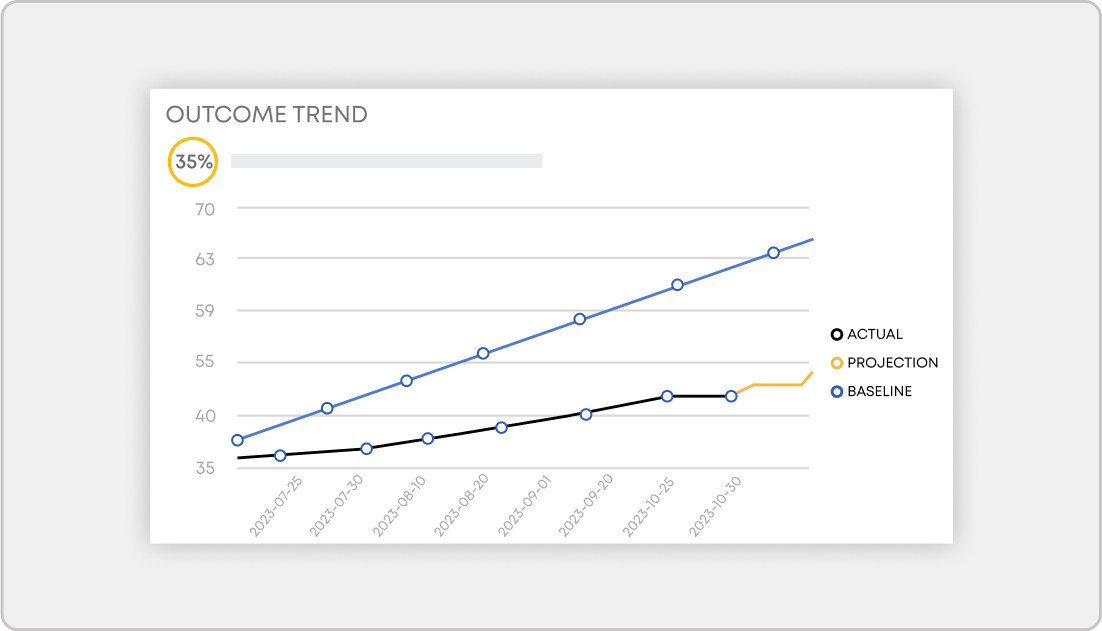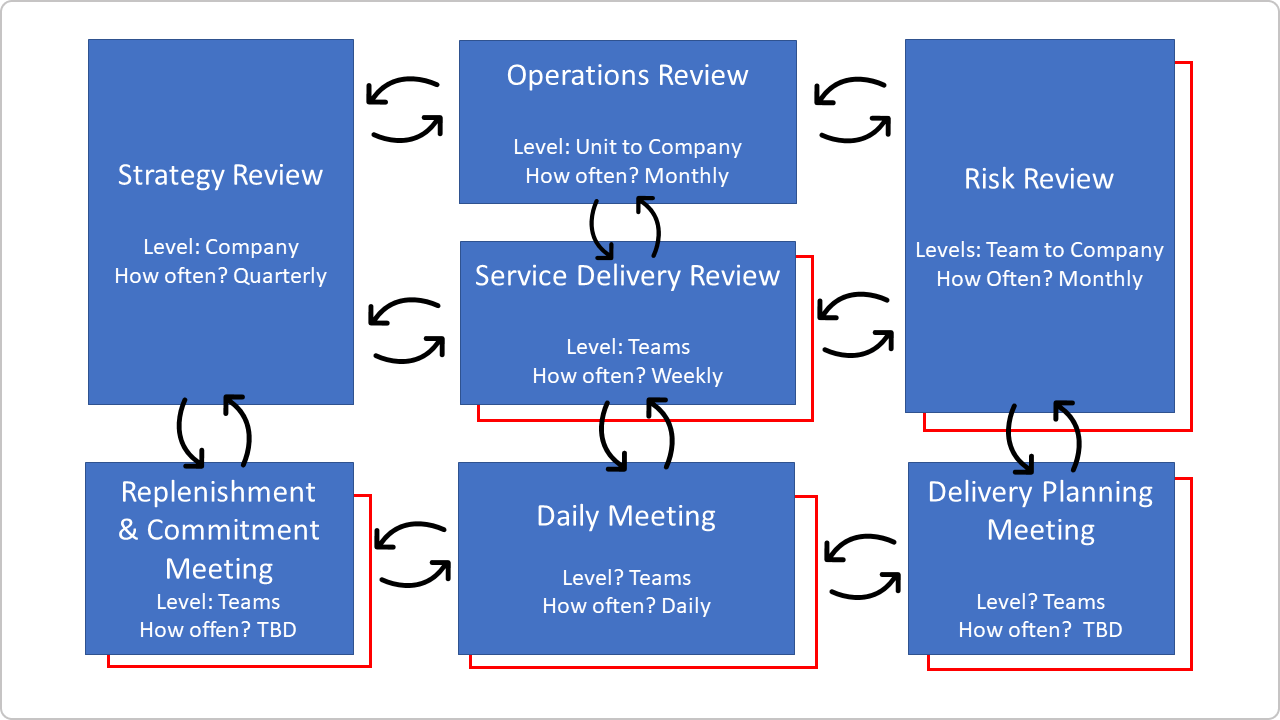OKR measurement relates to different practices for defining the progress and success of goals across the organization. While creating your OKRs is one piece of the puzzle, measuring them is a way to determine whether you’ve set the right outcomes and eventually improve them in the future.
Having said that, one of the most common challenges managers face is exactly setting up a process for measuring their OKRs. And while there isn’t a single best way to do this, we will walk you through common approaches for OKR measurement you should be aware of.
Prerequisites for Effective OKR Measurement
As a first step, it’s important to mention a few prerequisites. Unless you have them in place, measuring your OKRs can become a real struggle.
Let’s go over them below.
1. Ensure your OKRs Are Result-Oriented
One of the common OKR mistakes that managers make is to turn their OKRs into statements describing actions that are important to the business. For example, an objective like “Launch the new e-commerce platform by Q4” is more related to a project where you may measure different indicators for its completion.
Instead, an objective should describe an impact that ultimately drives behavioral change and supports the wider strategy. So, the above objective can become something like: “Increase European market share in the e-commerce space”. In turn, the KRs (key results) that support this objective should be quantitative performance measures that indicate whether you’re getting closer to achieving it.
2. Key Results Should Be Evidence, Not Solutions/Quotas
If you’ve already read some resources on OKRs, you might’ve stumbled upon a quote from Marissa Mayer (former President and Yahoo! CEO):
“It’s not a key result unless it has a number”.
While that’s powerful, it’s also important for every key result to represent evidence (so you can answer the “so what?” question), not a solution or a quota. To put this into perspective, if we take the objective from above (Increase European market share...), two of its KRs could be the following:
- Release 2 new features for European customers
- Launch 5 landing page variants for visitors from Europe
While you can certainly measure progress toward them, they’re more like targets that don’t represent evidence that you’re moving in the right direction in terms of achieving your actual goal. In other words, if you attach the “so what” question to each one of those key results, you will have a hard time measuring their impact on the objective.
That’s why try to create your KRs with evidence in mind. To help you do that, you can ask yourself a question like: “What would prove that we’re achieving the desired impact on the business”?
3. Specific Objectives Are Your Ally
A common dilemma is whether to make objectives more specific or broader. In our experience, a broader objective would work better on a higher level inside the company. But even then, refrain from objectives like “Be the best product in the project management space” because this contains a lot of different measures that can only dilute your focus.
Instead, aim to create objectives that have a more specific measurement area (ex. Establish the product in the project management market) and drive an organizational impact that gradually moves your company in your chosen strategic direction.
How to Measure OKRs - What to Focus On?
To measure your OKRs and ultimately determine their effectiveness, there are a few common practices you should focus on. Let’s take a look at them below.
Measuring OKRs Through Grading
A widely adopted approach for defining OKR success is known as OKR grading. In this process, there is a scale from 0.0 to 1.0, which averages the completion rates of all key results and conveys the following information about the objective:
- If there is a 70%-100% (0.7-1.0) completion of our OKR, then the status is “green”, meaning we achieved impact.
- If there is a 40%-60% (0.4-0.6) completion of our OKR, then the status is “yellow”, meaning we made progress toward an impact but fell short.
- If the overall grade is less than 30% (0.0-0.3), then the status is “red”, meaning that we failed to make significant progress.
 Traditional grading process to measure OKRs
Traditional grading process to measure OKRs
Here we should mention this grading scale is based on “stretch goals”, and you may not have such objectives all the time. So, in some cases, 70% might not be good enough. Also, those grades are subjective, and they may not be tied to a completion rate.
For example, if your team had a KR to increase specific leads to 10 per week, but they achieved half of that, the completion rate would be 50%, and you might say: “We did OK but not good enough”. However, if a high percentage of those leads adopt the product, then you might grade your KR higher than 0.5. That’s because if “product adoption” is the wider impact you want to achieve, you’re obviously doing something right.
In general, such a grading process ideally fits at the end of an OKR cycle because it opens the door to questions about whether you’re focusing on and measuring the right things. However, it doesn’t provide you with insight into your OKRs while you’re still working on them.
Measure OKRs Based on Goals & Work Progress
In case you’ve set your OKRs (especially key results) with a measure in mind, you can define a starting and a target value to aim for. Based on your progression, you should have a current value as well, which leads us to the following formula:
(Current Value – Starting Value)
--------------------------------------------- x 100 = % KR Progress
(Target Value – Starting Value)
When you average the progress rates of all KRs (key results), you will get the % progress for the entire OKR. Modern OKR tools can show you this insight automatically and regularly update it depending on how your current value is changing over time and also considering whether a deadline is approaching. With the help of trends, you can also measure the actual progression of your values and determine approximately when you can achieve your goals.

Use trends to measure the likelihood of achieving your goals
And while this can give you pointers on how likely it is to reach your targets, from our experience, it’s not enough. To measure the effectiveness of your OKRs, you need to factor in work progress too. For example, if your OKR is at 30% while 70% of the work activities that comprise it have already been completed, what does that tell you?
 Measure OKRs based on the progress of both goals and work activities
Measure OKRs based on the progress of both goals and work activities
Perhaps it’s an indicator that you’ve set a too-ambitious goal. Maybe you’re not doing the right work to achieve it. Or maybe it just takes longer for you to see results. If it’s the latter, should you have broken down your goal into several shorter-term OKRs instead?
Whatever the case is, measuring both outcome and work progress triggers questions about your OKRs. In turn, they can lead you to discussions about whether you’ve set the right goals, whether they are measurable enough, and what you can do to continuously improve them.
Consider Assigning Weights to Key Results
It’s important to mention that not always all key results will have the same impact on the wider objective. For example, imagine you want to prioritize improving positive onboarding experience (KR1) over driving specific types of leads (KR2) with the goal of increasing product adoption (Objective).
In this case, think of assigning bigger weight/importance to KR 1 compared to KR 2 for achieving the objective. To measure the final OKR, you will need to consider both KR’s weights. Once again, a modern software solution can help you automate this process too.
 Assigning weights to key results
Assigning weights to key results
Use Regular Reflection Points
And finally, don’t forget about regularly reflecting on your OKRs. One way to do this is through organizational feedback loops such as the Kanban cadences.
For example, you can have weekly/biweekly Service Delivery Reviews/retrospectives on a team level where you inspect the progress of work activities and compare it to outcomes progress. Outside of that, you can implement monthly/quarterly check-ins that look specifically into existing/new OKRs and how to improve your entire goal-setting process.

Utilize organizational feedback loops such as the Kanban cadences
The same can be applied on a strategic level where it’s a good practice for managers to engage both in Strategy and OKR reviews (or combine them into a single cadence). The goal here would be to regularly discuss market conditions, new opportunities, update the company OKRs or create new ones in collaboration with team/departmental leaders.
No matter what feedback loops you choose to apply, remember that measuring OKRs is a collaborative process. Aim at gaining insights from your current OKRs and their comprising work activities, so you can continuously set better goals.
We offer the most flexible software platform
for outcome-driven enterprise agility.
In Summary
Before you can measure OKRs, ensure your objectives are result-oriented and specific while the key results represent evidence of achieving impact. Then, focus on:
- Utilizing grading to measure OKRs at the end of a cycle
- Tracking both goals and work progress
- Determining if different KRs have different importance
- Using regular reflection points






 Measure OKRs based on the progress of both goals and work activities
Measure OKRs based on the progress of both goals and work activities Assigning weights to key results
Assigning weights to key results


